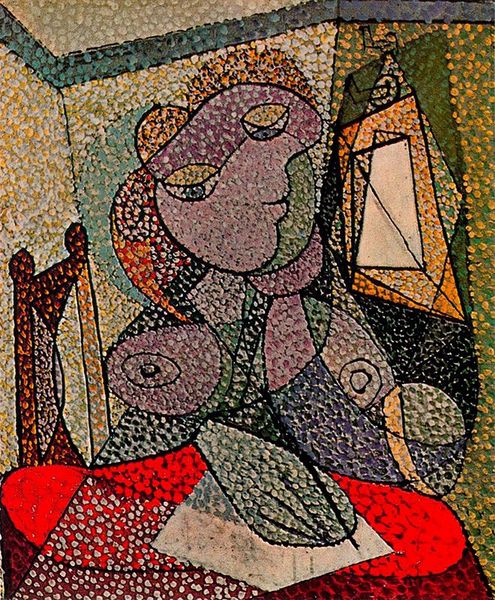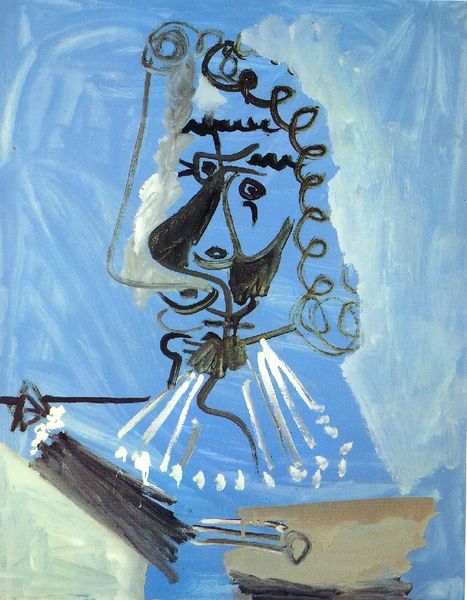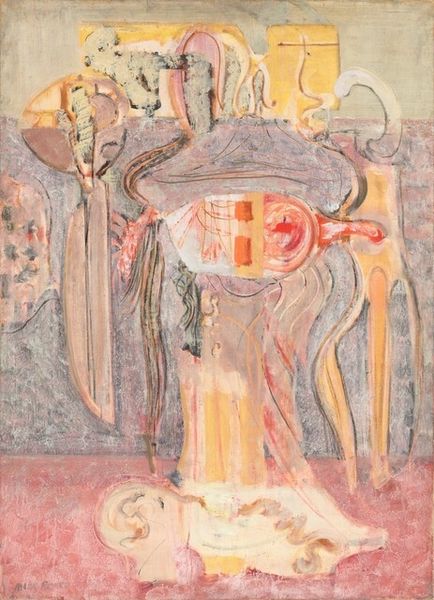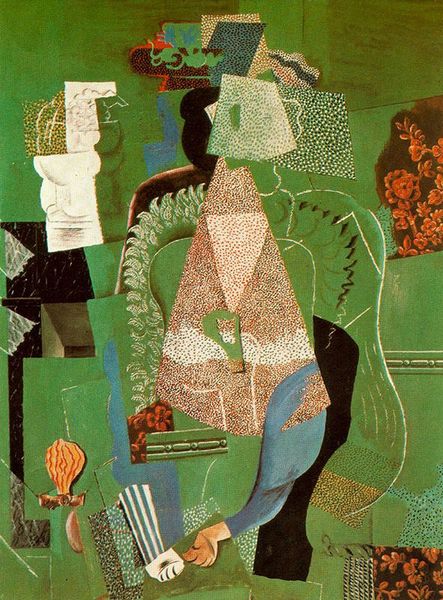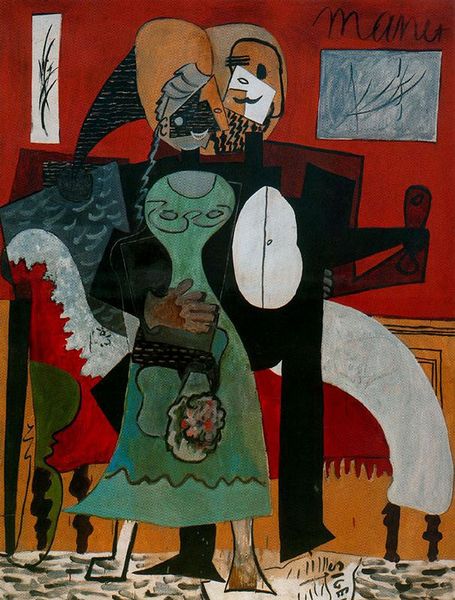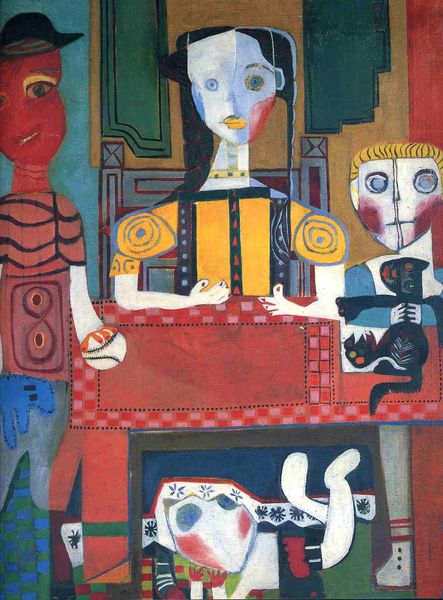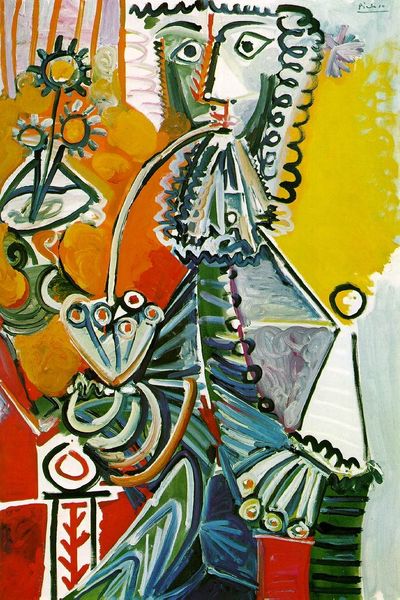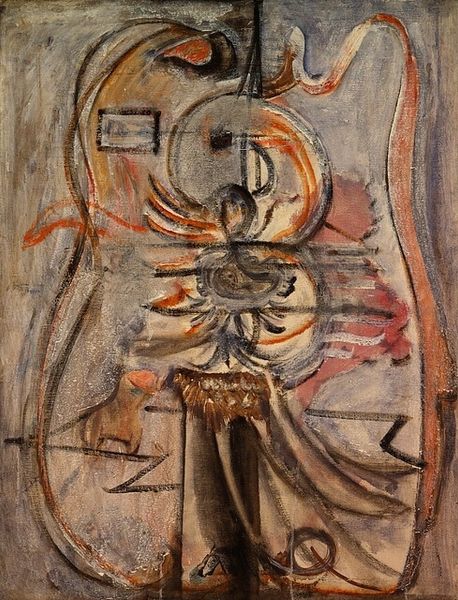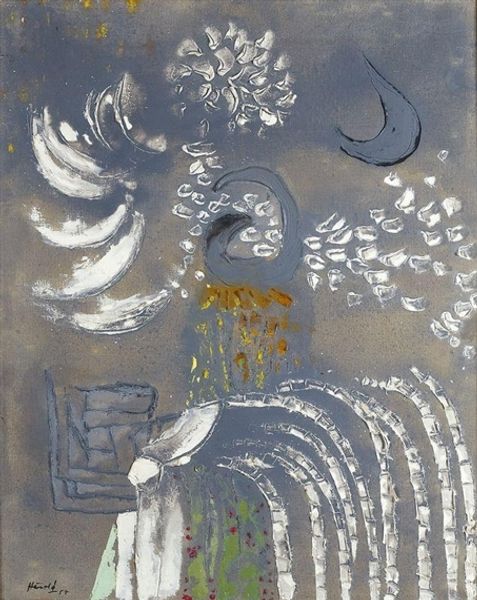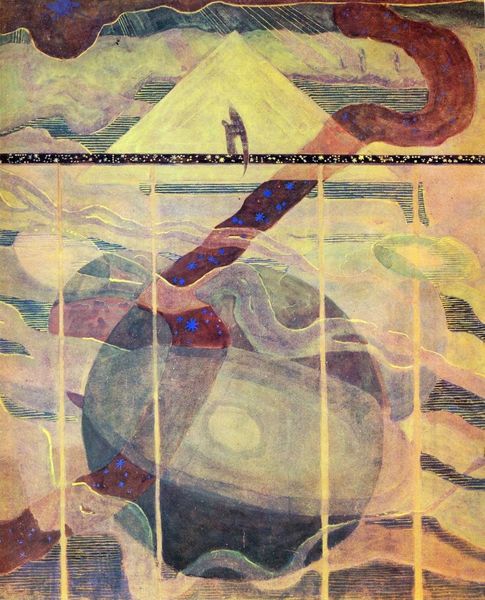
tempera, painting
#
organic
#
tempera
#
painting
#
figuration
#
surrealism
Copyright: Mark Rothko,Fair Use
Curator: Mark Rothko’s “Hierarchical Birds,” completed in 1944 using tempera, offers us a glimpse into the artist's surrealist phase. It's currently housed at the National Gallery of Art. Editor: My first impression is of constraint. The layering feels labored, not liberating, despite the playful shapes. I’m seeing something trying to break free from imposed structures. Curator: Given the tempera medium, one can see that each mark, each layered brushstroke, becomes an intentional, tangible decision. Tempera is very hands-on—you must mix the pigment fresh each time. I imagine Rothko's studio a workspace alive with experimentation at that time. Editor: Exactly. And I immediately read the visual language as steeped in archetypes, like a lexicon of forms representing aspects of human potential and repression. Consider the prominent placement of the large, descending birds; it feels like an allusion to humanity weighed down, not ascending, perhaps representing lost innocence or a fall from grace. Curator: Do you think the "organic" elements present represent some influence from the events unfolding at the time? A sense of nature altered or out of sync from modern warfare and social tension perhaps? Editor: I do. But, look closer at the “birds.” The layering gives them a totem-like quality, as if conjured for ritualistic meaning. The red eye, particularly, becomes a focal point, almost an omen, in the midst of war, representing either vigilance, doom, or knowledge we aren't supposed to know. Curator: The surface is quite tactile and busy too. The materiality draws attention to its handmade nature. I see how the painting acts like a material record of Rothko grappling with personal anxieties reflected and refracted from the second World War. Editor: It's almost a coded message embedded in surreal form. “Hierarchical Birds” transforms a simple collection of shapes into something potent about societal imbalance or a critique on power structures. I'm convinced there's a deliberate challenge of visual language. Curator: Thinking about this work, and its deliberate marks, recontextualizes his later abstract pieces in some interesting ways. Perhaps the seeds of those emotionally resonant fields of color were here all along. Editor: Indeed. The layered approach becomes the very method that Rothko's using to suggest and express his response to a world at war with itself and humanity itself on the precipice of enormous and unthinkable change. Thank you, the material is so heavy with what he suggests.
Comments
No comments
Be the first to comment and join the conversation on the ultimate creative platform.

